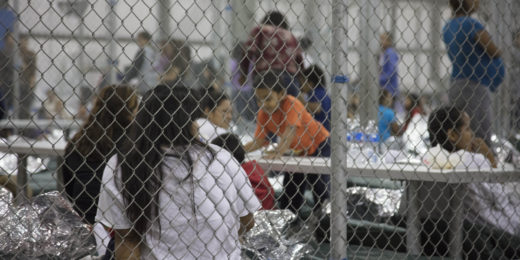How can prolonged detention affect a child?
This question is front and center as federal officials consider changing rules that govern how young people are treated when they cross with their parents into the United States and lack documentation.
Currently, these migrant families can be held no more than 20 days. After that, they’re often released — sometimes with GPS ankle bracelets — until their case is settled in immigration court. Now, the government has proposed removing the time limit for how long noncitizen families can be detained. The deadline for public comment on the proposed new regulation is Nov. 6.
The suggested changes are concerning to a group of psychologists, psychiatrists and pediatricians from the Bay Area — most of them from Stanford — who weighed in on potential mental health implications for immigrant children and families and offered suggestions for an approach that would minimize negative effects. In a letter to the administration, they wrote, “There is strong evidence that indefinite and unrestricted detention of family units presents significant risk to children and families that can result in catastrophic long-term psychological harm that can cross generations.”
As director of community research programs for Stanford Medicine's Early Life Stress and Pediatric Anxiety Program, Ryan Matlow, PhD, has worked with many children who have experienced trauma — including young people who were held in detention after crossing the border. He spearheaded the letter-writing campaign, and I recently contacted him to learn more.
Matlow explained to me that simply losing autonomy can be a major source of trauma, and that trauma can be compounded by any subpar conditions at a facility.
The negative effects, Matlow said, can get hardwired into a young person’s brain, strengthening biological pathways that emphasize emotion over logical thought.
As a result, he said, “When that young person is faced with a triggering situation, when they experience fear or danger or some kind of cue or signal that reminds them of something related to their trauma, they’re more susceptible to that emotional, fight-or-flight, survival response, which is often a fear-based response or leads to aggression or defensiveness.”
This is an adaptive response to threat or danger, he explained, but these adaptations — including those that occur in response to the conditions of detention — ultimately prove counterproductive for an individual who is trying to function in the regular world.
In the long term, this difficulty controlling emotions can interfere with a person’s ability to hold a job or maintain meaningful relationships, Matlow said. And the struggles can be passed along to the next generation in two ways: through parenting from a person with psychological challenges and through the expression of genes related to the stress response system that are primed to trigger similar behavior.
“We don’t only inherit our genes,” he explained, “but we inherit ways in which our genes are expressed.”
Understanding the importance of addressing trauma, researchers and clinicians have made progress defining best practices for treating it and even preventing it when possible. Key principles recommended by the federal Substance Abuse and Mental Health Services Administration include safety, trustworthiness and transparency, peer support, collaboration and mutuality, empowerment and sensitivity to cultural, historical and gender issues.
Matlow and his colleagues encouraged the government to keep these guidelines in mind as officials craft their approach to interacting with immigrant children and families. Among other suggestions, they recommended housing families together in community settings and offering them different options for placement as they await court proceedings.
Such a trauma-informed approach would benefit both immigrant families and the communities receiving them, Matlow told me:
If folks are received in a way where they’re treated with respect and openness and honesty, if they feel empowered and knowledgeable about what the immigration process in the United State means, it sets them on a pathway toward greater productivity and being functioning, contributing members of society.
Photo by Maria Elena Zuñiga






